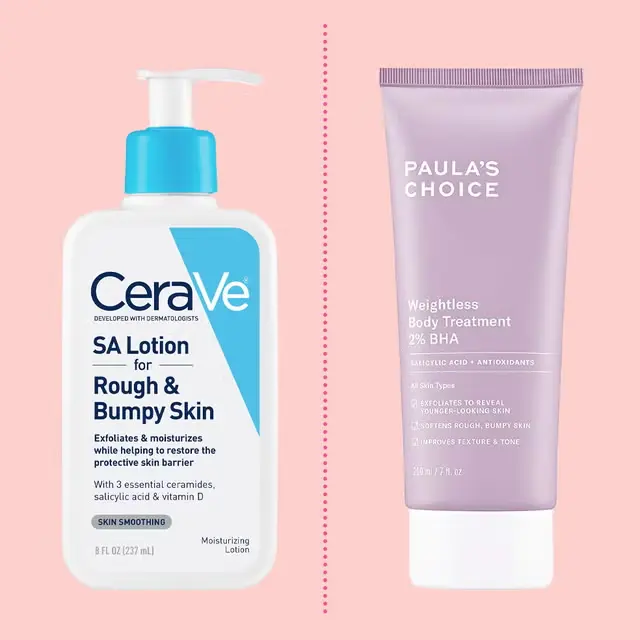If you struggle with rough, bumpy skin—especially on your arms, thighs, or buttocks—you might be dealing with keratosis pilaris (KP). One of the most effective treatments for this condition is a KP exfoliating lotion, which helps remove dead skin cells and smooth out texture over time. In this guide, we’ll explain how these lotions work, what ingredients matter, and how to incorporate them into a skin routine that delivers visible results.
What Is Keratosis Pilaris?
Keratosis pilaris is a common skin condition caused by a buildup of keratin—a protein that protects your skin—from blocking hair follicles. This results in small, acne-like bumps that feel rough to the touch and may be red or inflamed.
It’s most commonly found on:
- Upper arms – The most frequently affected area.
- Thighs and buttocks – Especially during cold or dry seasons.
- Cheeks – Particularly in children or those with sensitive skin.
Though KP is harmless, it can be persistent and frustrating without the right treatment.
How KP Exfoliating Lotions Work
A KP exfoliating lotion is formulated to remove dead skin cells and unclog hair follicles while hydrating the skin. The key to their success lies in the ingredients—they usually combine chemical exfoliants and moisturizers.
Here’s how they help:
- Break down keratin plugs – Using gentle acids to dissolve buildup.
- Smooth texture – By increasing cell turnover.
- Moisturize and soothe – Preventing further dryness or irritation.
The result is softer, clearer skin with less noticeable bumps.
Top Ingredients to Look For
Not all exfoliating lotions are equal. For real results, make sure the product includes clinically supported ingredients.
Look for these powerhouse components:
- Lactic Acid: A gentle AHA that exfoliates while improving hydration.
- Salicylic Acid (BHA): Penetrates hair follicles to clear blockages.
- Urea: Both exfoliates and hydrates, ideal for rough patches.
- Glycolic Acid: Promotes skin renewal and smoothness.
- Ceramides: Restore the skin barrier and prevent moisture loss.
- Aloe Vera and Vitamin E: Help calm irritation and reduce redness.
Products that combine exfoliants and moisturizers are generally more effective and better tolerated.
How to Use a KP Exfoliating Lotion
Consistency is key when it comes to treating keratosis pilaris. Here’s how to incorporate an exfoliating lotion into your daily routine:
- Cleanse the area gently with a fragrance-free wash.
- Pat the skin dry—don’t rub, to avoid irritation.
- Apply the lotion twice daily or as directed by the product.
- Massage it in thoroughly until fully absorbed.
- Avoid scrubbing the area with physical exfoliants, which can worsen KP.
Start with once-daily application if you have sensitive skin and increase as tolerated.
Additional Tips for Managing KP
Besides using a KP exfoliating lotion, combining a few other habits can help speed up your skin’s recovery and prevent flare-ups.
These tips can enhance your treatment plan:
- Use lukewarm—not hot—water when showering, as hot water dries the skin.
- Moisturize after every shower – Use a hydrating cream to lock in moisture.
- Avoid harsh soaps and scrubs – These can irritate the skin barrier.
- Stick with fragrance-free products – To reduce allergic reactions or inflammation.
- Stay consistent – Most people see improvements within 4–8 weeks.
Lifestyle changes combined with a targeted lotion regimen often deliver the best results.
Best KP Exfoliating Lotions to Try
Here are some top-rated lotions specifically formulated for keratosis pilaris:
Dermatologist-approved options include:
- CeraVe SA Lotion for Rough & Bumpy Skin – Includes salicylic acid, ceramides, and niacinamide.
- AmLactin Daily Moisturizing Lotion – Features 12% lactic acid for gentle yet effective exfoliation.
- Eucerin Roughness Relief Lotion – Contains urea and ceramides for dual exfoliating and hydrating action.
- Touch KP Exfoliating Lotion – Combines glycolic acid, salicylic acid, and aloe for a balanced formula.
Patch test any new product before applying it to larger areas, especially if you have sensitive skin.
What to Avoid When Treating KP
Some treatments may seem helpful but can actually aggravate the condition.
Avoid these common mistakes:
- Over-exfoliating – Can lead to increased redness and irritation.
- Using scrubs with rough particles – These can scratch the skin.
- Skipping moisturizer – Dry skin can worsen KP flare-ups.
- Inconsistent use – Sporadic application won’t yield long-term improvement.
The goal is gentle, consistent care—not aggressive treatments.
When to See a Dermatologist
In most cases, KP can be managed at home. However, if you’re not seeing progress or if the bumps are painful or inflamed, it’s a good idea to consult a dermatologist.
Seek medical advice if you:
- Experience bleeding or infection
- Have signs of eczema or psoriasis mixed with KP
- Want prescription-strength solutions
A doctor may recommend stronger topical treatments or additional diagnostic testing.
Final Thoughts
A targeted KP exfoliating lotion can make a big difference in managing keratosis pilaris when used consistently and with the right ingredients. Look for formulas that combine exfoliants like lactic acid and salicylic acid with moisturizers such as urea and ceramides.
With patience and proper care, you can significantly reduce bumps, improve skin texture, and feel more confident in your skin. Stick with gentle routines and dermatologist-backed products, and smooth skin will be within reach.
Also Read-Longevity Supplements: Enhancing Healthspan and Lifespan through Science










